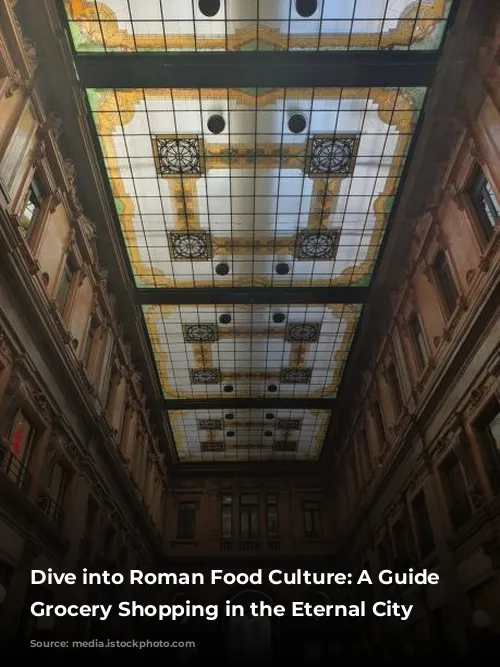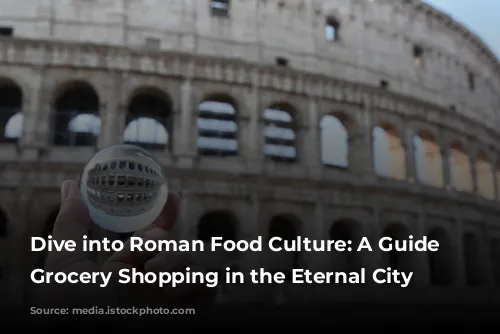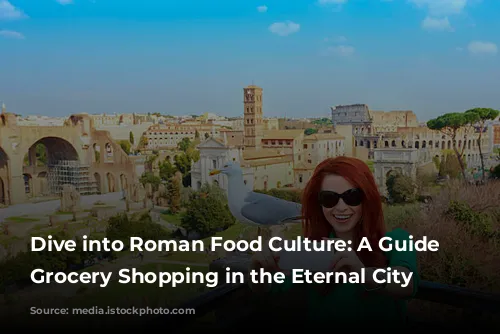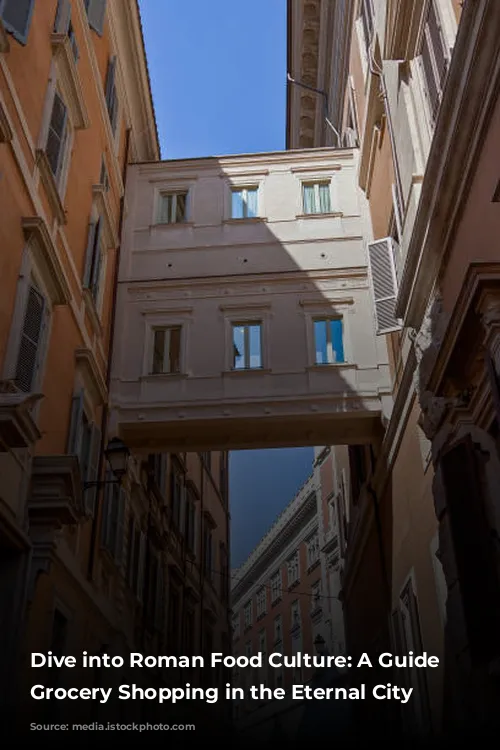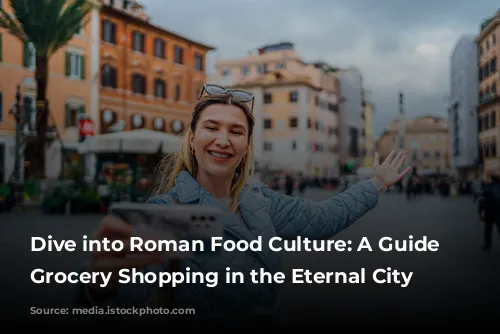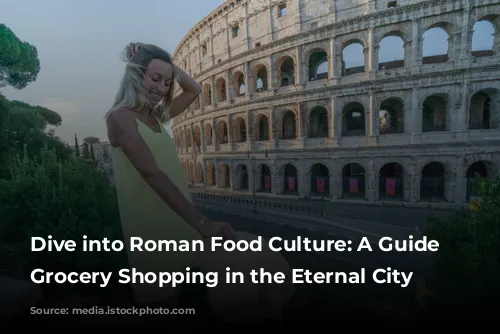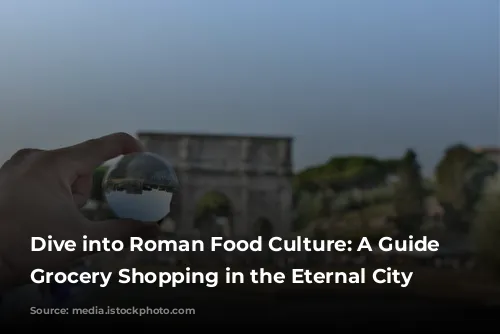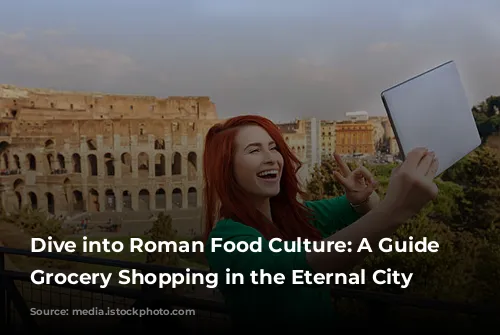Imagine this: You’re in Rome, strolling through charming streets lined with vibrant shops. The aroma of freshly baked bread and fragrant spices fills the air, tempting your senses. You’re not just shopping for groceries; you’re experiencing the heart and soul of Italian food culture. Grocery shopping in Rome is more than just a chore; it’s a delightful adventure.
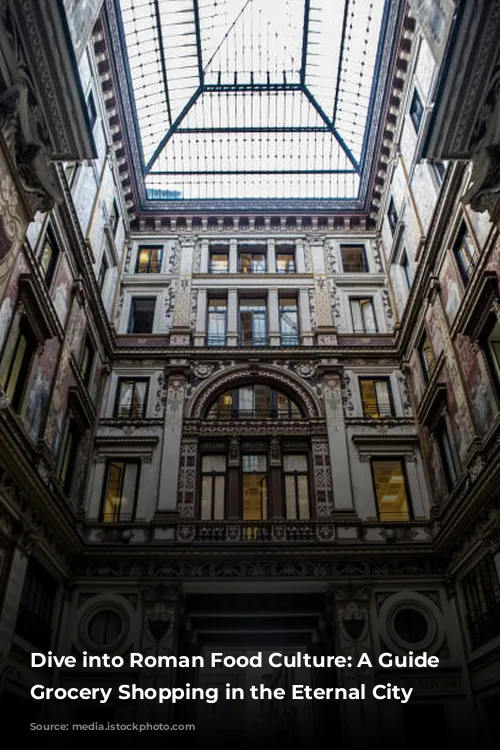
A Social Affair: Shopping for Food in Rome
For many Romans, venturing out to buy groceries is a social activity rather than a simple errand. They cherish the opportunity to connect with their local community, chatting with friendly stallholders and supporting the people who provide their food. Quality is paramount. If a product doesn’t meet expectations, locals won’t return. But if they’re impressed, they’ll become loyal customers, spreading the word to their friends and family.
Think of it as building relationships with the people who bring you delicious meals. Over time, the butchers, cheesemakers, and fishmongers you visit regularly will become familiar faces, welcoming you with warm smiles and helpful advice. Loyalty pays off, not only in friendly service but often in more favorable prices as well.
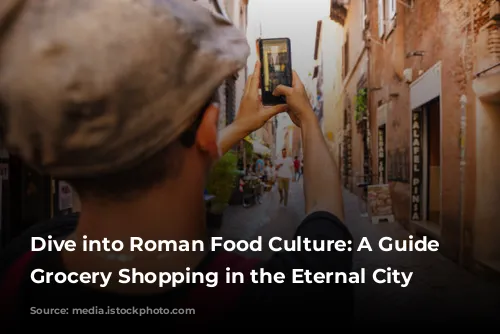
Unveiling the Secrets of Roman Markets
Most neighborhoods in Rome have their own bustling fresh produce markets, open from early morning until shortly after lunchtime, six days a week. These markets are a treasure trove of seasonal fruits and vegetables, often surpassing the quality found in supermarkets.
Fun Fact: In Italy, it’s considered polite to let the vendors help you choose your produce. They’re eager to guide you, often asking about your planned dish to ensure you select the perfect ripeness and variety.
Pro Tip: Produce is sold by the kilogram, so you can order by weight, count, or simply say “basta così” (that’s enough) when you have what you need. If you’re buying several items, vendors might even throw in some fresh herbs for free or round down your total for a little discount.
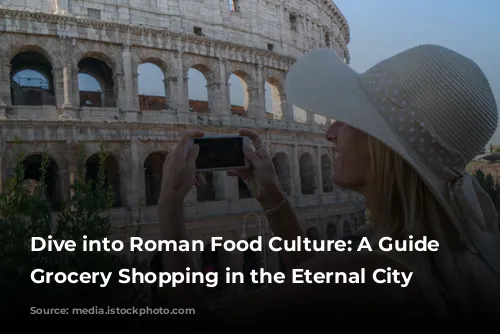
Exploring Rome’s Delicatessens
Rome’s delicatessens are culinary havens, offering an array of ready-to-eat delights and a chance to discover new types of cured meats and Italian cheeses. They might be called pizzicheria, norcineria, salumeria, gastronomia, or even something else entirely.
Fun Fact: Many delis operate with a number system. Look for a little dispenser, take your number, and patiently await your turn. It’s customary to be offered a taste before you buy, but it’s considered impolite to sample several items and then leave without purchasing anything.
Pro Tip: Many delis also sell fresh bread and are happy to make you a delicious sandwich on request—a fantastic way to enjoy an authentic Roman lunch without breaking the bank.
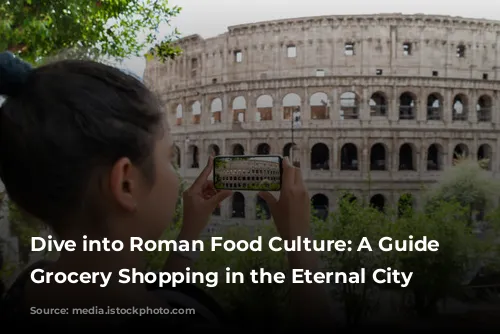
Discovering the Macellaio (Butcher)
The macellaio (butcher) might seem intimidating at first, especially if you’re not familiar with the Italian language. Cuts of meat can differ from what you’re used to, making it challenging to find the exact equivalent.
The best approach is to explain your planned recipe and how many people you’re cooking for, and then let the butcher guide you. They’re experts in their craft and will happily help you choose the perfect piece of meat for your dish.
Fun Fact: Once you’ve established a relationship with your butcher, you can even order specific cuts and types of meat in advance, ensuring you have exactly what you need for your culinary creations.
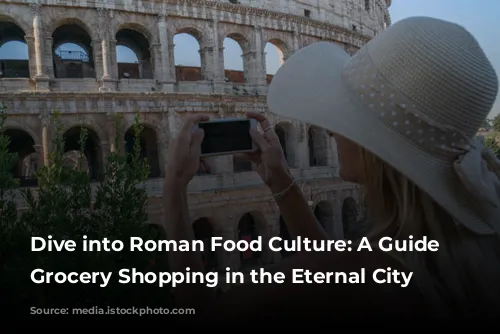
Delving into the Forno (Bakery)
The forno (literally ‘oven’) is a haven for sweet and savory baked goods, from various types of bread to delectable biscuits, pastries, and often pizza al taglio (pizza by the slice).
Fun Fact: Italians are passionate about minimizing food waste, especially with bread. Being able to buy precisely the amount you need helps reduce waste and ensures your bread is always fresh.
Pro Tip: Everything in the forno is sold by weight, so you don’t have to buy a whole loaf—just ask for a half or a quarter.
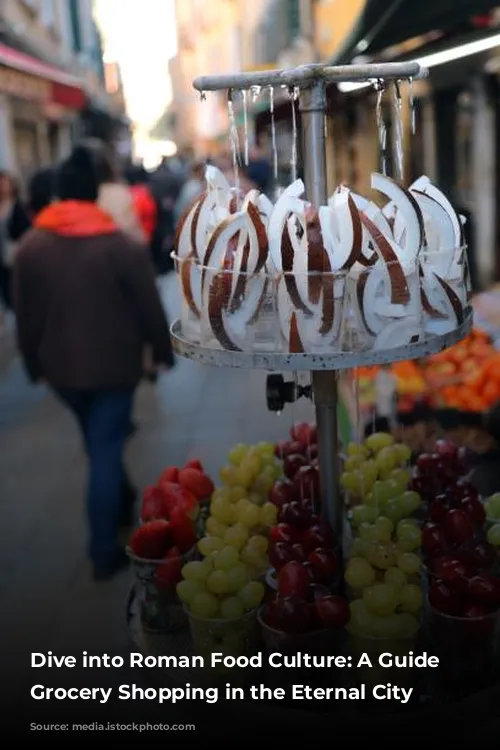
Navigating the Pescivendolo (Fishmonger)
The pescivendolo or pescheria (fishmonger) can be a sensory overload, but the quality and freshness of the seafood are well worth it. In Rome, Tuesdays and Fridays are prime days for fresh fish, so you might find shops closed or with limited selections on other days.
Fun Fact: Fish and seafood are usually sold as-is, but most vendors are happy to clean or fillet your selection, saving you some time and effort at home.
For a truly immersive Italian experience, immerse yourself in the vibrant heart of Roman food culture. Explore the markets, chat with friendly vendors, and discover the secrets of the city’s culinary traditions. From the bustling markets to the charming delicatessens, your taste buds will thank you for the adventure!
